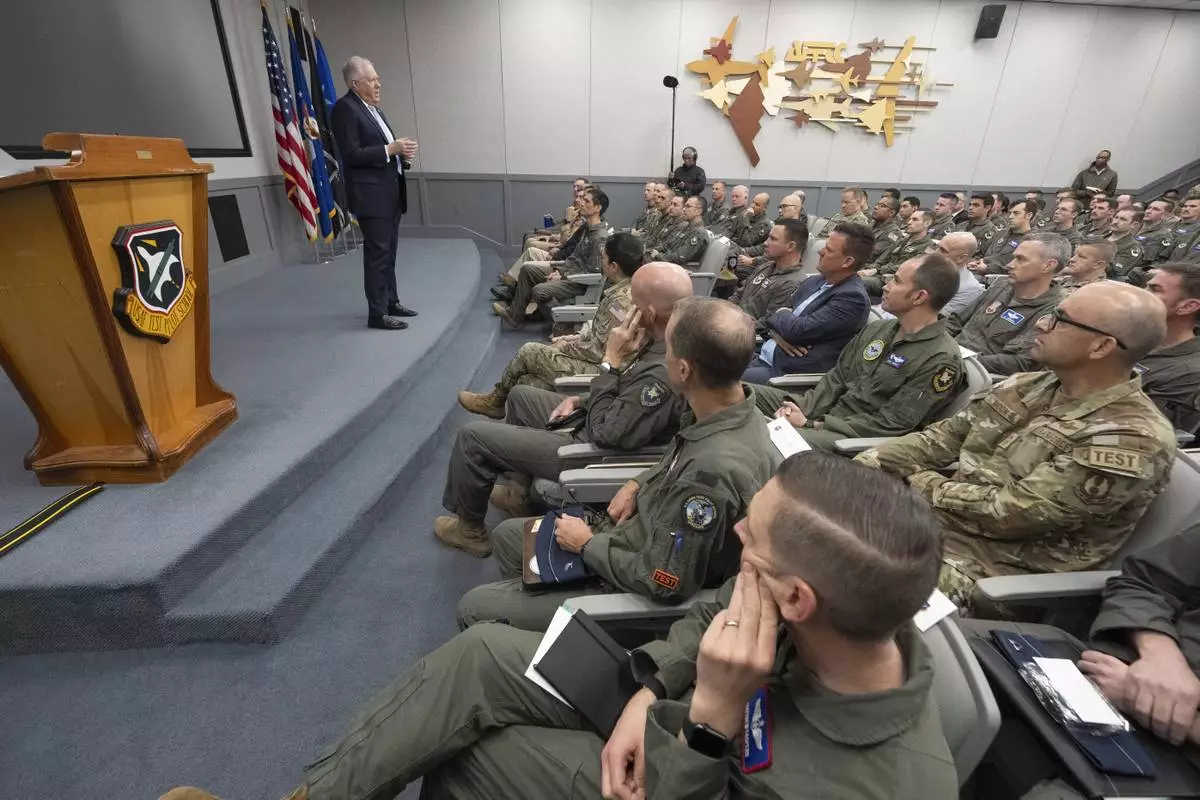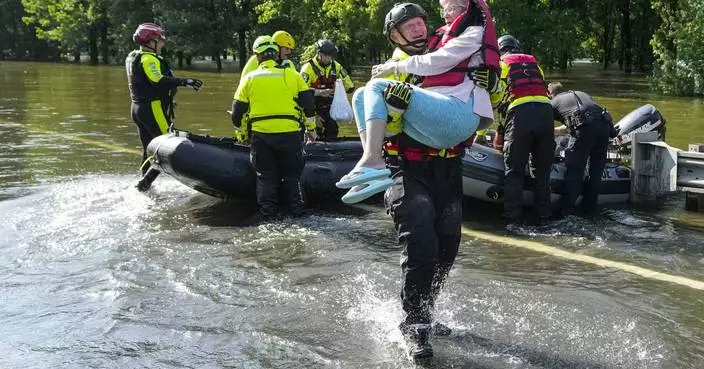The U.S. Supreme Court appeared to side with Starbucks Tuesday in a case that could make it harder for the federal government to seek injunctions when it suspects a company of interfering in unionization campaigns.
Justices noted during oral arguments that Congress requires the National Labor Relations Board to seek such injunctions in federal court and said that gives the courts the duty to consider several factors, including whether the board would ultimately be successful in its administrative case against a company.
“The district court is an independent check. So it seems like it should be just doing what district courts do, since it was given the authority to do it,” Justice Amy Coney Barrett said.
But the NLRB says that since 1947, the National Labor Relations Act — the law that governs the agency — has allowed courts to grant temporary injunctions if it finds a request “just and proper.” The agency says the law doesn't require it to prove other factors and was intended to limit the role of the courts.
The case that made it to the high court began in February 2022, when Starbucks fired seven workers who were trying to unionize their Tennessee store. The NLRB obtained a court order forcing the company to rehire the workers while the case wound its way through the agency's administrative proceedings. Such proceedings can take up to two years.
A district court judge agreed with the NLRB and issued a temporary injunction ordering Starbucks to rehire the workers in August 2022. After the 6th U.S. Circuit Court of Appeals upheld that ruling, Starbucks appealed to the Supreme Court.
Five of the seven workers are still employed at the Memphis store, while the other two remain involved with the organizing effort, according to Workers United, the union organizing Starbucks workers. The Memphis store voted to unionize in June 2022.
Starbucks asked the Supreme Court to intervene because it says federal appeals courts don’t agree on the standards the NLRB must meet when it requests a temporary injunction against a company.
In its review of what transpired at the Starbucks store in Memphis, the Sixth Circuit required the NLRB to establish two things: that it had reasonable cause to believe unfair labor practices occurred and that a restraining order would be a “just and proper” solution.
But other federal appeals courts have required the NLRB to meet a tougher, four-factor test used when other federal agencies seek restraining orders, including showing it was likely to prevail in the administrative case and that employees would suffer irreparable harm without an injunction.
Justice Ketanji Brown Jackson appeared to agree with the NLRB's argument that Congress meant for the agency to operate under a different standard.
She noted the NLRB has already determined it is likely to prevail in a case by the time it seeks an injunction. And she noted that injunctions are very rare. In the NLRB's 2023 fiscal year, it received 19,869 charges of unfair labor practices but authorized the filing of just 14 cases seeking temporary injunctions.
“I appreciate that maybe the standards we need to look at, and I understand four factors versus two factors, but this is not sounding like a huge problem," Jackson said.
Justice Sonia Sotomayor wondered aloud if whatever the Supreme Court decides will be moot since the injunction would have expired and an NLRB judge may have ruled in the Starbucks' case by the time the court's decision is published.
But she also seemed to agree that the courts should have a clearer role in NLRB cases.
“It’s the court that has to decide the likelihood of merit," Sotomayor said.
The oral arguments took place even as the animosity between Workers United and Starbucks has begun to fade. The two sides announced in February that they would restart talks with the aim of reaching contract agreements this year. Starbucks and union representatives planned to meet Wednesday for their first bargaining session in nearly a year.
Workers at 424 company-owned U.S. Starbucks stores have voted to unionize since late 2021, according to the NLRB, but none of those stores has secured a labor agreement with Starbucks.
Durbin reported from Detroit.

FILE - Starbucks employees and supporters link arms during a union election watch party Dec. 9, 2021, in Buffalo, N.Y. The U.S. Supreme Court is set to hear oral arguments in a case filed by Starbucks against the National Labor Relations Board. (AP Photo/Joshua Bessex, File)
EDWARDS AIR FORCE BASE, Calif. (AP) —
With the midday sun blazing, an experimental orange and white F-16 fighter jet launched with a familiar roar that is a hallmark of U.S. airpower. But the aerial combat that followed was unlike any other: This F-16 was controlled by artificial intelligence, not a human pilot. And riding in the front seat was Air Force Secretary Frank Kendall.
AI marks one of the biggest advances in military aviation since the introduction of stealth in the early 1990s, and the Air Force has aggressively leaned in. Even though the technology is not fully developed, the service is planning for an AI-enabled fleet of more than 1,000 unmanned warplanes, the first of them operating by 2028.
It was fitting that the dogfight took place at Edwards Air Force Base, a vast desert facility where Chuck Yeager broke the speed of sound and the military has incubated its most secret aerospace advances. Inside classified simulators and buildings with layers of shielding against surveillance, a new test-pilot generation is training AI agents to fly in war. Kendall traveled here to see AI fly in real time and make a public statement of confidence in its future role in air combat.
“It’s a security risk not to have it. At this point, we have to have it,” Kendall said in an interview with The Associated Press after he landed. The AP, along with NBC, was granted permission to witness the secret flight on the condition that it would not be reported until it was complete because of operational security concerns.
The AI-controlled F-16, called Vista, flew Kendall in lightning-fast maneuvers at more than 550 miles an hour that put pressure on his body at five times the force of gravity. It went nearly nose to nose with a second human-piloted F-16 as both aircraft raced within 1,000 feet of each other, twisting and looping to try force their opponent into vulnerable positions.
At the end of the hourlong flight, Kendall climbed out of the cockpit grinning. He said he’d seen enough during his flight that he’d trust this still-learning AI with the ability to decide whether or not to launch weapons.
There’s a lot of opposition to that idea. Arms control experts and humanitarian groups are deeply concerned that AI one day might be able to autonomously drop bombs that kill people without further human consultation, and they are seeking greater restrictions on its use.
“There are widespread and serious concerns about ceding life-and-death decisions to sensors and software,” the International Committee of the Red Cross has warned. Autonomous weapons “are an immediate cause of concern and demand an urgent, international political response.”
The military’s shift to AI-enabled planes is driven by security, cost and strategic capability. If the U.S. and China should end up in conflict, for example, today's Air Force fleet of expensive, manned fighters will be vulnerable because of gains on both sides in electronic warfare, space and air defense systems. China’s air force is on pace to outnumber the U.S. and it is also amassing a fleet of flying unmanned weapons.
Future war scenarios envision swarms of American unmanned aircraft providing an advance attack on enemy defenses to give the U.S. the ability to penetrate an airspace without high risk to pilot lives. But the shift is also driven by money. The Air Force is still hampered by production delays and cost overruns in the F-35 Joint Strike Fighter, which will cost an estimated of $1.7 trillion.
Smaller and cheaper AI-controlled unmanned jets are the way ahead, Kendall said.
Vista’s military operators say no other country in the world has an AI jet like it, where the software first learns on millions of data points in a simulator, then tests its conclusions during actual flights. That real-world performance data is then put back into the simulator where the AI then processes it to learn more.
China has AI, but there’s no indication it has found a way to run tests outside a simulator. And, like a junior officer first learning tactics, some lessons can only be learned in the air, Vista’s test pilots said.
Until you actually fly, “it’s all guesswork,” chief test pilot Bill Gray said. “And the longer it takes you to figure that out, the longer it takes before you have useful systems.”
Vista flew its first AI-controlled dogfight in September 2023, and there have only been about two dozen similar flights since. But the programs are learning so quickly from each engagement that some AI versions getting tested on Vista are already beating human pilots in air-to-air combat.
The pilots at this base are aware that in some respects, they may be training their replacements or shaping a future construct where fewer of them are needed.
But they also say they would not want to be up in the sky against an adversary that has AI-controlled aircraft if the U.S. does not also have its own fleet.
“We have to keep running. And we have to run fast,” Kendall said.

Air Force Secretary Frank Kendall smiles after a test flight of the X-62A VISTA aircraft against a human-crewed F-16 aircraft in the skies above Edwards Air Force Base, Calif., on Thursday, May 2, 2024. The flight on the Artificial Intelligence-controlled VISTA is serving as a public statement of confidence in the future role of AI in air combat. The military is planning to use the technology to operate an unmanned fleet of 1,000 aircraft. (AP Photo/Damian Dovarganes)

Air Force Secretary Frank Kendall, right, and Maj. Ryan Forystek, an X-62A VISTA Pilot for SecAF flight, climb into the cockpit of the X-62A VISTA aircraft at Edwards Air Force Base, Calif., on Thursday, May 2, 2024. The AI-controlled aircraft that flew Kendall served as a public statement of confidence in the future role of AI in air combat. The military is planning to use the technology to operate an unmanned fleet of 1,000 aircraft. (AP Photo/Damian Dovarganes)

Air Force Secretary Frank Kendall, right, talks to Col. James Valpiani, Commandant, USAF TPS, after Kendall's test flight of the X-62A VISTA aircraft against a human-crewed F-16 aircraft in the skies above Edwards Air Force Base, Calif., on Thursday, May 2, 2024. The flight is serving as a public statement of confidence in the future role of AI in air combat. The military is planning to use the technology to operate an unmanned fleet of 1,000 aircraft. (AP Photo/Damian Dovarganes)

Col. James Valpiani, Air Force Test Pilot School commandant, explains the Artificial Intelligence capabilities of the X-62A VISTA aircraft dogfighting on Wednesday, May 1, 2024, at Edwards Air Force Base, Calif. The Artificial Intelligence-controlled flight, with Air Force Secretary Frank Kendall, is serving as a public statement of confidence in the future role of AI in air combat. The military is planning to use the technology to operate an unmanned fleet of 1,000 aircraft. (AP Photo/Damian Dovarganes)

An Air Force mechanic checks the interior of the X-62A Variable Stability In-Flight Simulator Test Aircraft, or VISTA, after it performed several AI flight tests in which AI agents piloted to perform advanced fighter maneuvers against a human-crewed F-16 aircraft in the skies above Edwards Air Force Base, Calif., on Thursday, May 2, 2024. The flight is serving as a public statement of confidence in the future role of AI in air combat. The military is planning to use the technology to operate an unmanned fleet of 1,000 aircraft. (AP Photo/Damian Dovarganes)

Air Force Secretary Frank Kendal addresses the future role of Artificial Intelligence in air combat at USAF Test Pilot School at Edwards Air Force Base, Calif., on Thursday, May 2, 2024. The X-62A VISTA aircraft, an AI-controlled experimental F-16, flew Kendall in maneuvers that put 5Gs of pressure on his body at speeds exceeding 550 miles an hour. The flight is serving as a public statement of confidence in the future role of AI in air combat. The military is planning to use the technology to operate an unmanned fleet of 1,000 aircraft. (AP Photo/Damian Dovarganes)

The X-62A VISTA aircraft, an experimental AI-enabled Air Force F-16 fighter jet, takes off on Thursday, May 2, 2024, at Edwards Air Force Base, Calif. The flight, with Air Force Secretary Frank Kendall riding in the front seat, is serving as a public statement of confidence in the future role of AI in air combat. The military is planning to use the technology to operate an unmanned fleet of 1,000 aircraft. (AP Photo/Damian Dovarganes)

Air Force Secretary Frank Kendall sits in the front cockpit of an X-62A VISTA aircraft at Edwards Air Force Base, Calif., on Thursday, May 2, 2024. The flight on the AI-controlled aircraft is serving as a public statement of confidence in the future role of AI in air combat. The military is planning to use the technology to operate an unmanned fleet of 1,000 aircraft. Arms control experts and humanitarian groups are concerned that AI might one day be able to take lives autonomously and are seeking greater restrictions on its use. (AP Photo/Damian Dovarganes)

An AI-enabled Air Force F-16 fighter jet, left, flies next to an adversary F-16, as both aircraft race within 1,000 feet of each other, trying to force their opponent into vulnerable positions, on Thursday, May 2, 2024, above Edwards Air Force Base, Calif. The flight is serving as a public statement of confidence in the future role of AI in air combat. The military is planning to use the technology to operate an unmanned fleet of 1,000 aircraft. (AP Photo/Damian Dovarganes)

This image from remote video released by the U.S. Air Force shows Air Force Secretary Frank Kendall during his experimental flight inside the cockpit of a X-62A VISTA aircraft autonomous warplane above Edwards Air Base, Calif, on Thursday, May 2, 2024. The AI-controlled flight is serving as a public statement of confidence in the future role of AI in air combat. (United States Air Force Photo via AP)

Air Force Secretary Frank Kendall sits in the front cockpit of an X-62A VISTA aircraft at Edwards Air Force Base, Calif., on Thursday, May 2, 2024. The flight on the Artificial Intelligence-controlled modified F-16, is serving as a public statement of confidence in the future role of AI in air combat. The military is planning to use the technology to operate an unmanned fleet of 1,000 aircraft. Arms control experts and humanitarian groups are concerned that AI might one day be able to take lives autonomously and are seeking greater restrictions on its use. (AP Photo/Damian Dovarganes)





















